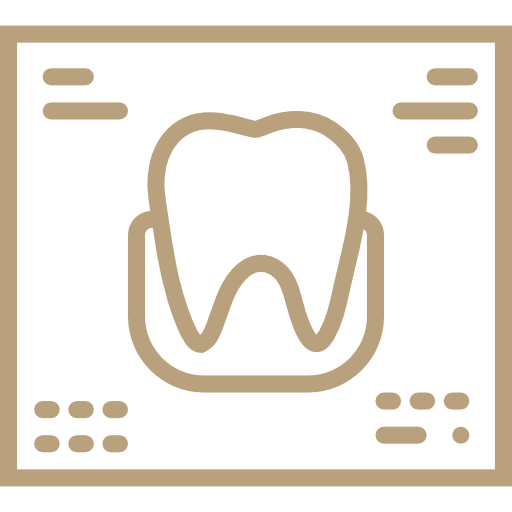
Computer-aided oral surgery
Process reliability through digitalization
Our oral surgery practice is fully digitalized. For our patients, this means advantages through process reliability by means of digitalization in diagnostics, planning, execution, and control. For our patients, this means advantages through process reliability by means of digitalization in diagnostics, planning, execution, and control.
All digitalized procedures used in our practice serve to optimize the process of individual treatment procedures. This begins with precise digital X-ray diagnostics. On the basis of this, we can plan upcoming operations down to the smallest detail using computer-simulated interventions. This enables us, among other things, to compare contraindications electronically and to find individually adapted solutions for our patients, even in difficult initial situations. We then perform the planned procedure accurately and safely using digital procedural techniques. The security that we, as physicians, gain from digitalized processes also contributes to a high level of patient safety and has a clear influence on a positive course of treatment and healing.

Computer-aided oral surgery
Process reliability through digitalization
Our oral surgery practice is fully digitalized. For our patients, this means advantages through process reliability by means of digitalization in diagnostics, planning, execution, and control. For our patients, this means advantages through process reliability by means of digitalization in diagnostics, planning, execution, and control.
All digitalized procedures used in our practice serve to optimize the process of individual treatment procedures. This begins with precise digital X-ray diagnostics. On the basis of this, we can plan upcoming operations down to the smallest detail using computer-simulated interventions. This enables us, among other things, to compare contraindications electronically and to find individually adapted solutions for our patients, even in difficult initial situations. We then perform the planned procedure accurately and safely using digital procedural techniques. The security that we, as physicians, gain from digitalized processes also contributes to a high level of patient safety and has a clear influence on a positive course of treatment and healing.
Digital X-ray
The differentiated diagnostic information we obtain from cone beam computed tomography (CBCT) on all surgery-relevant anatomical conditions forms the basis for highly reliable virtual planning/navigation.
CAD/CAM procedures for implants and dental prostheses
CAD/CAM stands for computer-aided design/computer-aided manufacturing. Due to its high precision, this method has been used in dentistry for several years for computer-aided planning and the positioning of implants, as well as for digital planning and the fabrication of accurately fixng dental prostheses (fully guided implantation).
Guided implantation: Guided implant surgery
For maximum procedural safety, 3D-guided implantation is the most advanced solution for the precise virtual diagnosis, planning, and positioning of implants, as well as for performing the entire surgical procedure in a safe, accurate, predictable, and efficient manner (fully guided implantation). Based on the 3D X-ray image we create with our CBCT, we place implants virtually on the screen and determine the optimal size, position, and axis. The sovware then creates a guide template, which is printed with a 3D printer and transfers the precisely determined position into the patient’s mouth. In collaboration with our referral dentists, we are happy to offer data transfer and the associated joint digitalized patient care.



